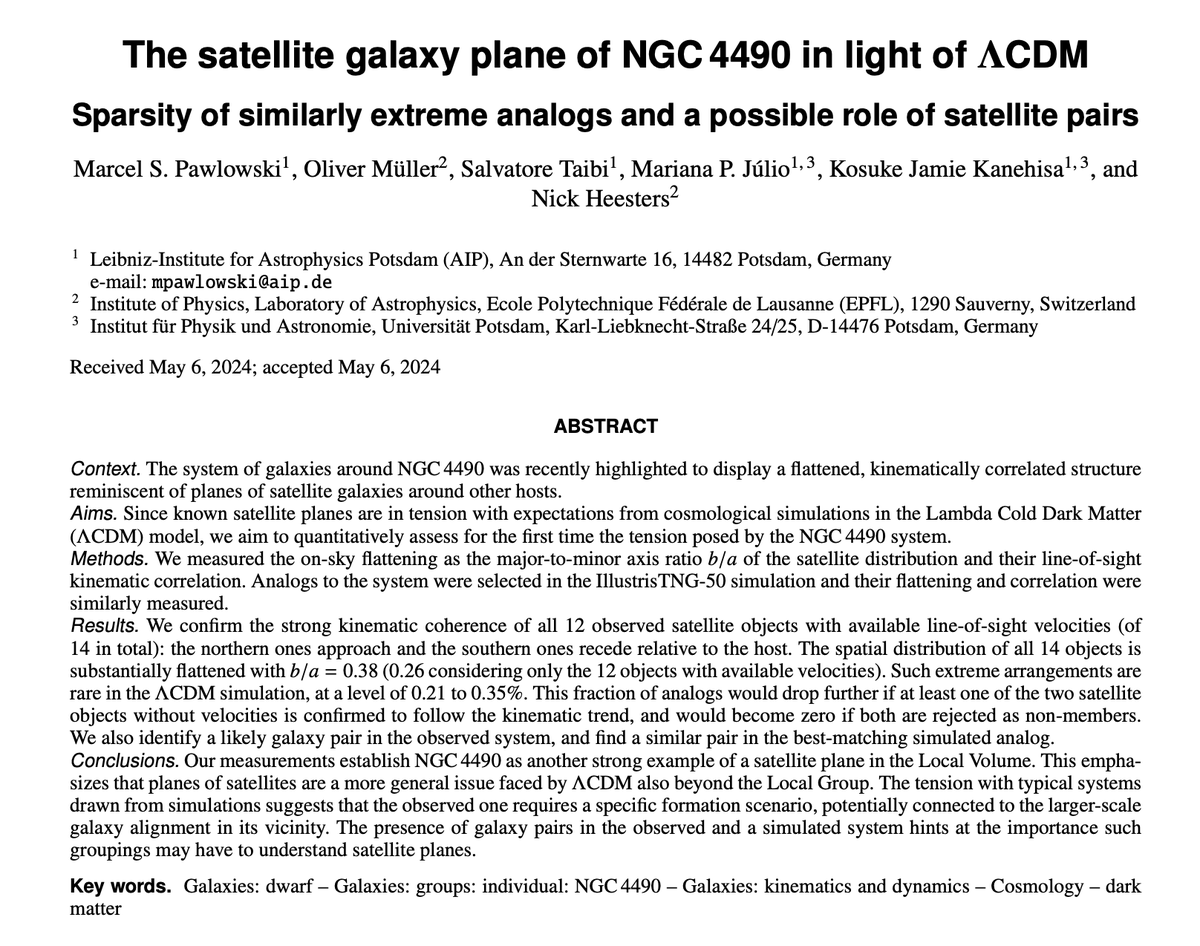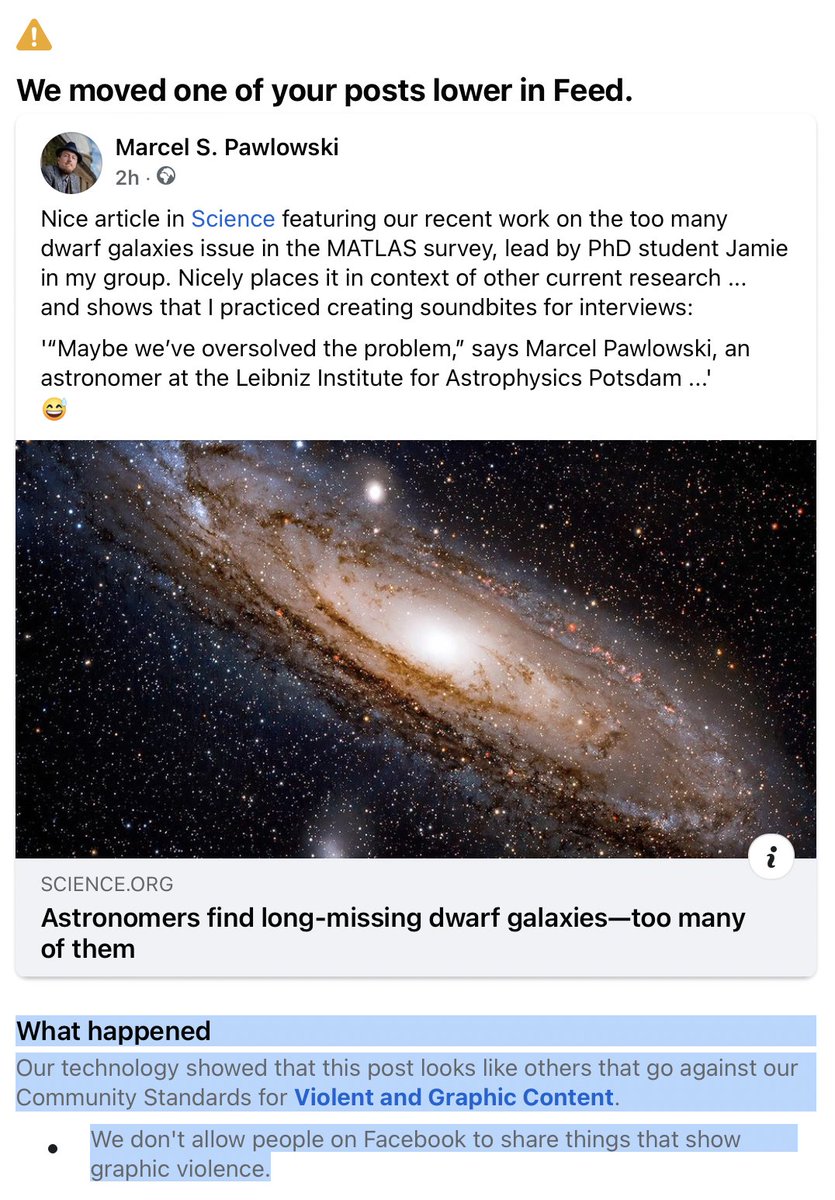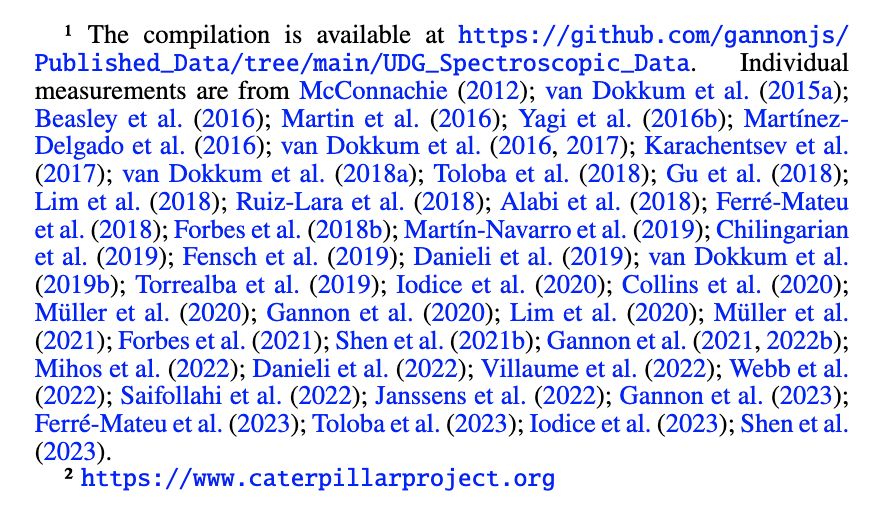
Oliver Müller, Ph.D.
@voltarch
Stargazing astrophysicist, data scientist, nerd, blogger, guitarist, Pen & Paper enthusiast. @EPFL_en, formerly @UniBasel, @ObsStrasbourg, @Google_CH. He/him.
ID: 2815170184
http://www.oliver-mueller.ch 08-10-2014 12:10:11
4,4K Tweet
6,6K Takipçi
344 Takip Edilen


Always a pleasure to work with Marcel S. Pawlowski, Nick Heesters, and the amazing team in AIP. The biggest shout-out goes to Jamie Kanehisa though, who went above and beyond. He basically came up with the paper after seeing an early version of our work on M83.

Paper day! We present the NGC4490 system as yet another satellite galaxy plane in strong tension with expectations from ΛCDM cosmological simulations. With Oliver Müller, Ph.D., Nick Heesters & my COSMICOR team at AIP (Salvatore, Mariana & Jamie). arxiv.org/abs/2405.06016 1/n




Astronomers find long-missing dwarf galaxies—too many of them Nice article by Jonathan O’Callaghan in Science Magazine featuring our recent work on too many dwarfs in the MATLAS survey and placing it into context of other current research. science.org/content/articl…

Astronomers once thought there might be a "missing satellites problem" – our Milky Way didn't have enough dwarf galaxies in its grip. Now we might have oversolved the problem, finding too many satellites. What's going on? Story by me News from Science science.org/content/articl…






New paper, lead by Nick Heesters, in which we find an increased incidence of significantly lopsided (asymmetric) satellite galaxy distributions around a large sample of observed host galaxies. Nick tweeted a fantastic thread about it, too. Go check it out and give him a follow!👇

Check out Nick Heesters's second paper of his Ph.D. on anistropies in dwarf galaxy satellite distributions. It's a very cool work and showcases what you actually can do with the growing catalogs of nearby dwarf galaxy systems.





We (with Oliver Müller, Ph.D.) have a new preprint out today: arxiv.org/abs/2412.14330 Long story short: if your only tool is "planarity", everything looks like a plane (of satellite galaxies). But let me explain. 🧵


